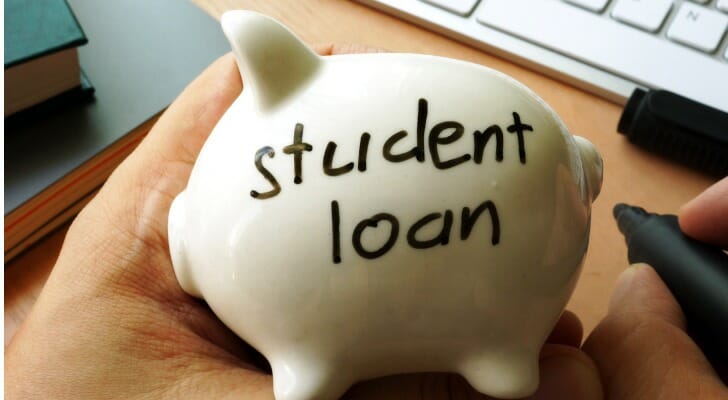As you explore funding options for higher education, you’ll come across many different ways to pay for school. You can try your hand at scholarships and grants, but you may also need to secure federal student loans. Depending on your financial situation, you may qualify for a subsidized loan or an unsubsidized loan. Here’s the breakdown of subsidized and unsubsidized loans, along with how to get each of them.
Subsidized vs. Unsubsidized Loans
In name, there’s only a two-letter difference. But in operation, subsidized and unsubsidized loans – sometimes referred to as Stafford loans – aren’t quite the same.
A subsidized loan is available to undergraduate students who prove financial need and are enrolled in school at least part-time. After students or parents of the students fill out the Free Application for Financial Student Aid (FAFSA), the school will determine how much money can be borrowed. Unfortunately, you can’t borrow more than you need.
One major difference of a subsidized loan vs. an unsubsidized loan is that the U.S. Department of Education pays the interest on a subsidized loan while the student is in school, for the first six months after graduating and during a deferment period (if the student chooses to defer the loan). For example, if your subsidized loan is $5,000 at the start of your college education, it’ll still be $5,000 when you begin paying it off after graduation because the government paid the interest on it while you were in school. The same may not be true for an unsubsidized loan.
An unsubsidized loan is available to both undergraduate and graduate students, and isn’t based on financial need. This means anyone who applies for one can get it. Like subsidized loans, students or their parents are required to fill out the FAFSA in order to determine how much can be borrowed. However, unlike subsidized loans, the size of the unsubsidized loan isn’t strictly based on financial need, so more money can be borrowed.
For an unsubsidized loan, students are responsible for paying the interest while in school, regardless of enrollment, as well as during deferment or forbearance periods. If you choose not to pay your interest during these times, the interest will continue to accrue, which means that your monthly payments could be more costly when you’re ready to pay them.
Both types of loans have interest rates that are set by the government and both come with a fee. Each one offers some of the easiest repayment options compared to private student loans, too. Students are eligible to borrow these loans for 150% of the length of the educational program they’re enrolled in. For example, if you attend a four-year university, you can borrow these loans for up to six years.
Pros and Cons

Both types of loans have pros and cons. Depending on your financial situation and education, one may be a better fit than the other. Even if you qualify for a subsidized loan, it’s important to understand what that means for your situation before borrowing that money.
Pros of Subsidized Loans
- The student is not required to pay interest on the loan until after the six-month grace period after graduation.
- The loan may be great for students who can’t afford the tuition and don’t have enough money from grants or scholarships to afford college costs.
Cons of Subsidized Loans
- Students are limited in how much they can borrow. In the first year, you’re only allowed to borrow $3,500 in subsidized loans. After that, you can only borrow $4,500 the second year and $5,500 for years three and beyond. The total aggregate loan amount is limited to $23,000. This might cause you to take out additional loans to cover other costs.
- Subsidized loans are only available for undergraduate students. Graduate students – even those who show financial need – don’t qualify.
If you don’t qualify for a subsidized loan, you may still be eligible for an unsubsidized loan.
Pros of Unsubsidized Loans
- They are available to both undergraduate and graduate students who need to borrow money for school.
- The amount you can borrow isn’t based on financial need.
- Students are able to borrow more money than subsidized loans. The total aggregate loan amount is limited to $31,000 for undergraduate students considered dependents and whose parents don’t qualify for direct PLUS loans. Undergraduate independent students may be allowed to borrow up to $57,500, while graduate students may be allowed to borrow up to $138,500.
Cons of Unsubsidized Loans
- Interest adds up — and you could be on the hook for it — while you’re in school. Once you start paying back the unsubsidized loan, payments may be more expensive than those for a subsidized loan because of the accrued interest.
How to Secure Subsidized and Unsubsidized Loans

If you’re looking to get loans to pay for a college education, direct subsidized or unsubsidized loans might be your best option.
To apply for a subsidized or unsubsidized loan, you’ll need to complete the FAFSA. The form will ask you for important financial information based on your family’s income. From there, your college or university will use your FAFSA to determine the amount of student aid for which you’re eligible. Be mindful of the FAFSA deadline, as well additional deadlines set by your state for applying for state and institutional financial aid.
After the amount is decided, you’ll receive a financial aid package that details your expected family contribution and how much financial help you’ll get from the government. Your letter will include the amount of money you’ll receive in grants, as well as all types of loans you could secure. If you’re ready to accept the federal aid offered, you’ll need to submit a Mastery Promissory Note (MPN). This is a legal document that states your promise to pay back your loans in full, including any fees and accrued interest, to the U.S. Department of Education.
Bottom Line
Both subsidized and unsubsidized loans may be good financial resources for upcoming college students who need help paying for school. Both loans tend to have lower interest rates than private student loans, as well as easier repayment terms.
Keep in mind that these are still loans and they will need to be paid back. If you avoid paying your student loans, you could end up in default or with a delinquent status, and your credit score could be damaged. Once you’re done with your college or graduate school education, stay responsible with your student loan repayment and you’ll be on the path to a successful financial future.
Tips for Managing Student Loan Debt
- If you’re struggling to manage student loan debt, consider working with a financial advisor. Finding a financial advisor doesn’t have to be hard. SmartAsset’s free tool matches you with up to three vetted financial advisors who serve your area, and you can interview your advisor matches at no cost to decide which one is right for you. If you’re ready to find an advisor who can help you achieve your financial goals, get started now.
- Paying off student loans can be overwhelming. One way to make it easier is by refinancing them into one lower monthly payment, if you can. Check out the different student loan refinance rates that are available to you now.
Photo credit: ©iStock.com/baona, ©iStock.com/urbazon, ©iStock.com/designer491
